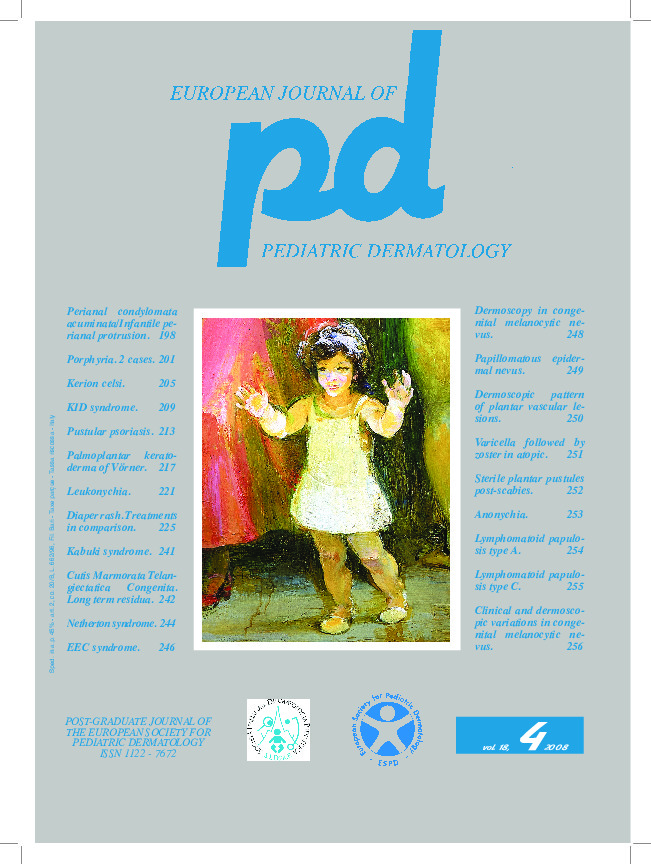Pigmentary mosaicism in a boy with suspected Kabuki syndrome.
Downloads
How to Cite
Bonifazi E. 2008. Pigmentary mosaicism in a boy with suspected Kabuki syndrome. Eur. J. Pediat. Dermatol. 18 (4): 241.
pp. 241
Abstract
Kabuki syndrome was named after the mask of the traditional Japanese theatre. The latter revives in the facies of the affected subjects, characterized by eversion of the lower lateral eyelid, arched eyebrows, long eyelashes, elongated rima palpebrarum, depressed nasal tip and prominent ears. Bone abnormalities, persistence of fetal fingertip pads, mild mental retardation and growth deficiency are also associated.Numerous other problems such as precocious puberty, cardiovascular disorders and deafness can also be present. Its prevalence in Japan is 1/32,000 infants.
From a dermatological point of view, pigmentary mosaicism as in our patient was reported by other Authors (1, 2), favoring the hypothesis of cell mosaicism. Some cases of the literature presented really a cellular clone characterized by a small ring (X) chromosome (2).
Keywords
Pigmentary mosaicism, Kabuki syndrome

